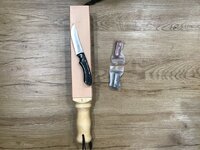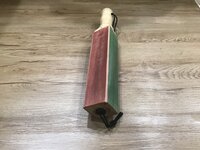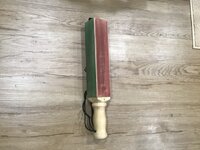If someone ever applies for a job in a meat factory, they will often give a knife sharpening test with a knife and ceramic stick (steel). Consistent angle is very important to getting an edge and muscle memory is important. People taking the test can struggle for hours going through the motions, but the edge doesn’t get sharp until their motions and angles become more consistent. Honestly, if a knife isn’t super hard a ceramic stick is what keeps the nations butcher shops and meat factories running.
I’m a fan of diamond sticks because they can be aggressive or leave a fine edge based on pressure. I used to enjoy sharpening other people’s pocket knives - at the time I had no idea why it came naturally to me and knives became sharp quickly, but it was obviously just muscle memory. Eventually I had an opportunity to sharpen some very hard blades, and it works just fine on them as well.
Diamond sharpeners have to be used lightly or you’ll just have what looks like a serrated blade under the microscope and it will never get super sharp. I like to do 10 light strokes to each side, then 9, then 8, etc then once you reach one check it - if it appears sharp, then start at 5 strokes and repeat, but use very light strokes. Then put a few strokes on a smooth hardened steel rod. If 3 super light strokes each side are used every time it’s used, the blade will stay sharp indefinitely.
Having said that, there’s nothing wrong with water stones and a very traditional sharpening method, this just work well for me and our knives the way we use them.



